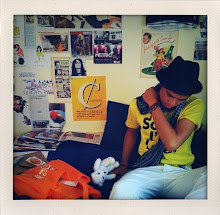The definition of the term medium has expanded drastically with the coming of the digital age directly due to the rise of new technologies. It has allowed for all media content to be communicated and relayed in more methods that make delivery faster and more convenient, which inversely affects the way it is arranged and styled for audiences. It is clear that in the presence of such devices as the iPhone and services like iTunes that convergence is also meshing all these new technologies with old ones and mediums, as many as they are separately, are becoming intertwined. Now expectations of readers or viewers have changed and their perceptions of content is now relative to what medium they are using. A youTube video would attract audiences for different reasons than a primetime drama on network television, yet both achieve the same goal of communication. This also means that the dominance of large corporate media outlets is fading because of the ease for anyone with a computer and some creative endeavor to steal audience with a niche perspective. So outlets have tried to overcome this by catering to those fans by hiring those “amateur” types to create TV content or those bloggers to publish writing. Media creation is becoming more open and democratic because now the playing field is more level and the idea of mass media itself is not the only option of delivery as it once was. Media is also now instant and transmittable across the globe at the speed of a mouse click. People from all over the world can get news and updates from every city and capture a sense of connectedness that would have been impossible just a decade or so ago. This also affects the role of censorship. Censorship is widely used in mass media, especially for controversial issues such as war, to mediate between actual events and the content the public perceives. Thus, with the advent of new media technologies, it is difficult for government or media conglomerates to control the flow at all because a simple cell phone photo can be uploaded and spread across the entire Internet within moments. At this time, we have already passed the crossroads of the digital age and embraced the mediums of new media. Technologies have converged and created a multitude of facets to obtain information at rates we have never experienced. If one were to dismiss this transition, he or she would most definitely be left behind in the dust of traditionalism, while still relevant, is clearly not the powerhouse it once was.
Tuesday, February 2, 2010
Subscribe to:
Post Comments (Atom)

You make some very good points here, Ray, very good points. It is important to point out how these different media have converged. What you wrote about the government controlling the flow of information pleased me. However, do you think because of this ease of transmission of information, governments could take drastic steps in the direction of Big Brother-style, extreme censoship?
ReplyDelete